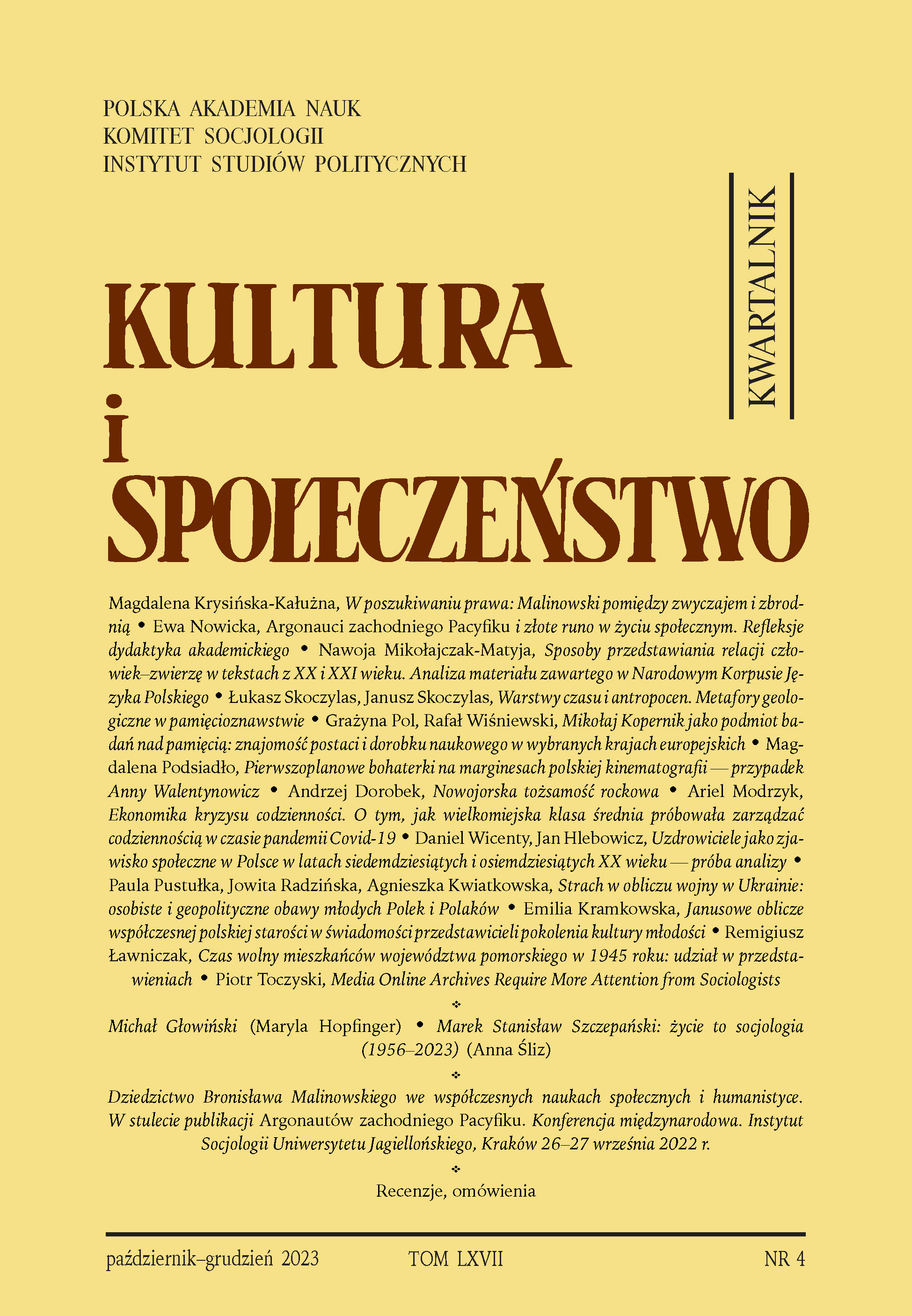EKONOMIKA KRYZYSU CODZIENNOŚCI
O TYM, JAK WIELKOMIEJSKA KLASA ŚREDNIA PRÓBOWAŁA ZARZĄDZAĆ CODZIENNOŚCIĄ W CZASIE PANDEMII COVID-19
THE ECONOMICS OF CRISIS IN EVERYDAY LIFE.
ON HOW THE METROPOLITAN MIDDLE CLASS STRIVED
TO MANAGE EVERYDAY LIFE DURING THE COVID-19 PANDEMIC
Author(s): Ariel ModrzykSubject(s): Social development, Health and medicine and law, Socio-Economic Research
Published by: Instytut Studiów Politycznych PAN
Keywords: everyday life; crisis; pandemic; adaptation; excesses; shortages;
Summary/Abstract: The article follows on from the research project “Everyday life during a pandemic”, the aim of which was to show the relational nature of the categories of excesses and shortages, and thus the organic essence of everyday life itself. The second goal was to present patterns of experiencing the crisis in everyday life, meaning how it is sustained in such moments, with the help of what practices and cognitive categories. Crisis economics is one such instrument, referring to the process of measuring, which is far from a quantitative and mathematical form of establishing relationships between phenomena. The economics of everyday life is qualitative, and is accompanied by such concepts as “too much”, “too little”, “less than”, “more than”, “similarly”, and “at least”. Such measures are subjective, and are applied in a specific situational context — in this case at a moment of disruption and crisis in everyday life. The article describes several examples of such crisis economics in the form of the principle of “at least”, “better not risk”, and “more but for less time”.
Journal: Kultura i Społeczeństwo
- Issue Year: 67/2023
- Issue No: 4
- Page Range: 151-180
- Page Count: 30
- Language: Polish

